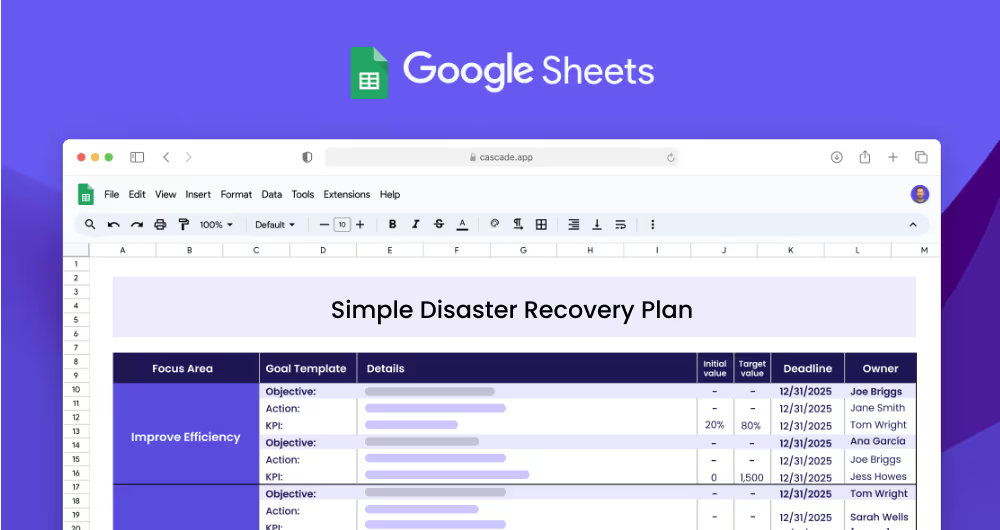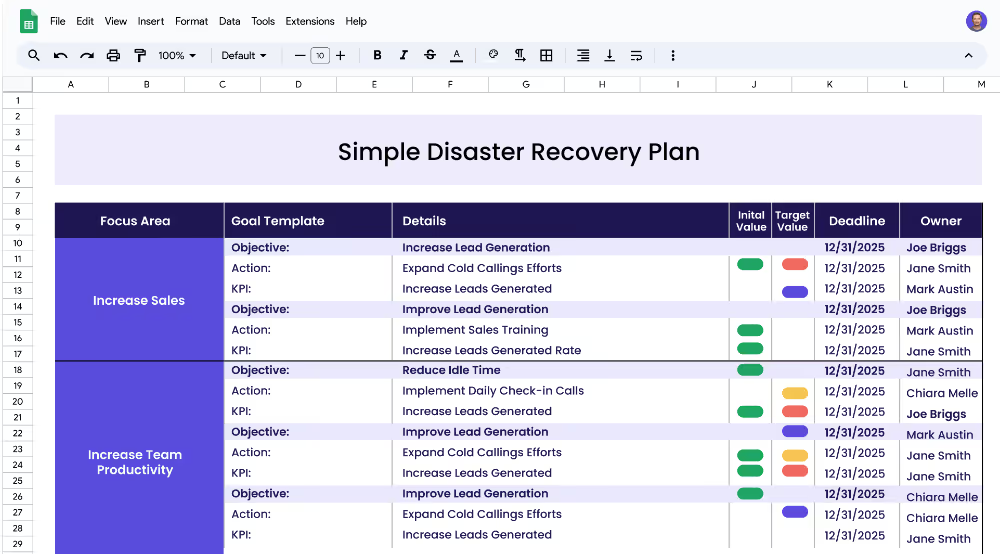A simple disaster recovery plan is an actionable strategy that outlines the steps a business needs to take to prepare and recover from a disaster or outage. It identifies potential risks and outlines procedures for responding to them quickly and efficiently, while minimizing disruption to the business's operations and finances. The plan should be tailored to the specific needs of the business and should include the resources and steps necessary to restore operations in the event of a disaster.
Each focus area has its own objectives, projects, and KPIs to ensure that the strategy is comprehensive and effective.
This simple disaster recovery plan template is for businesses of all sizes and industries to create a plan to recover from a disaster or outage. It provides a comprehensive structure for mapping out every step in the process and ensuring that all necessary measures are taken to prevent downtime, minimize disruption, and protect the business and its assets.
Focus areas are the core strategies that a business must take to ensure its recovery from a disaster or outage. A few examples of focus areas in a disaster recovery plan include data backup and recovery, business continuity, and disaster communications. Each focus area should include objectives and actions that will help the business achieve a successful recovery.
Objectives are specific goals that a business must achieve in order to be successful in recovering from a disaster or outage. They should be measurable and actionable, and should be linked to the focus areas they are part of. Examples of objectives include implementing a backup and recovery plan, reducing downtime, or increasing business resiliency.
Key Performance Indicators (KPIs) are measurable goals that a business must achieve in order to succeed in its recovery from a disaster or outage. Each KPI should have an initial value, a target value, and a unit of measure. Examples of KPIs include successfully backing up all critical data, reducing downtime from 8 hours to 2 hours, or conducting risk assessments every 3 months.
Projects, or actions, are the steps that a business must take to achieve its objectives and KPIs. These projects should be achievable and measurable, with clear timelines and assigned roles. Examples of projects include establishing a failover plan for all critical systems, developing a risk assessment program, or documenting business processes.
If you’re ready to accelerate your strategy beyond the limits of spreadsheets and see quicker, more substantial results, Cascade Strategy Execution Software is your go-to solution. Cascade outshines traditional methods by providing a robust platform that supports real-time updates, centralized collaboration, and automated reporting. This streamlines the process of tracking progress, adapting strategies swiftly, and maintaining alignment throughout your organization. Sign-up for free or book a demo with one of our strategy experts to revolutionize your strategy execution today!


